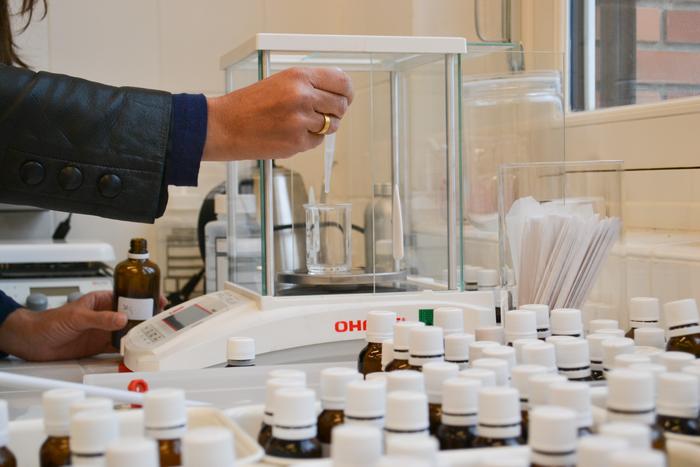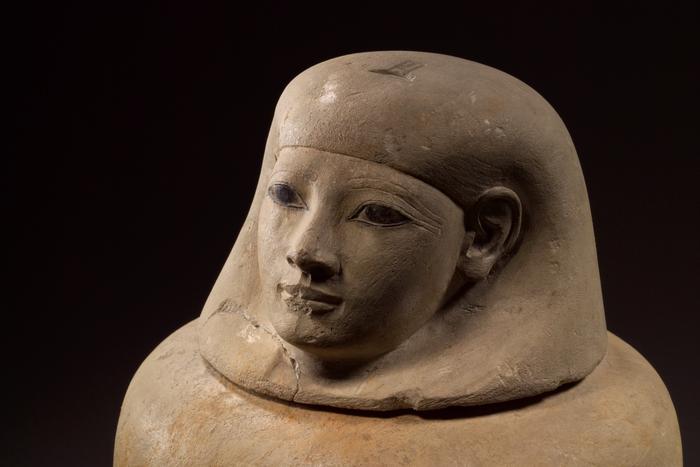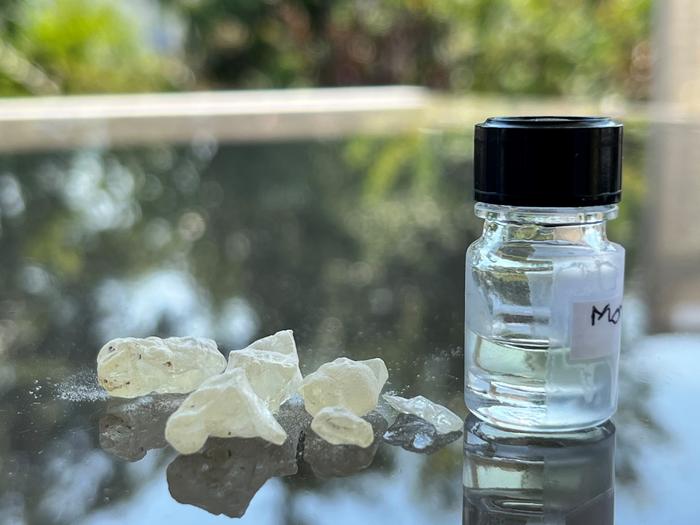A new study on the ingredients of the ancient Egyptian mummification balms reflects the high status of the noblewoman Senetnay
The Scent of the Afterlife Unbottled in New Study of Ancient Egyptian Mummification Balms
A team of researchers led by Barbara Huber has recreated one of the scents used in the mummification of an important Egyptian woman more than 3500 years ago. The ancient aroma will be presented at the Moesgaard Museum in Denmark in an upcoming exhibition.

In an innovative endeavor to create a sensory bridge to the ancient past, a team of researchers led by Barbara Huber of the MPI of Geoanthropology has recreated one of the scents used in the mummification of an important Egyptian woman more than 3500 years ago.
Coined ‘the scent of eternity’, the ancient aroma will be presented at the Moesgaard Museum in Denmark in an upcoming exhibition, offering visitors a unique sensory experience: to encounter firsthand an ambient smell from antiquity – and catch a whiff of the ancient Egyptian process of mummification.

The team’s research centered on the mummification substances used to embalm the noble lady Senetnay in the 18th dynasty, circa 1450 BCE. The researchers utilized advanced analytical techniques – including Gas Chromatography-Mass Spectrometry, High-Temperature Gas Chromatography-Mass Spectrometry, and Liquid Chromatography-Tandem Mass Spectrometry – to reconstruct the substances that helped to preserve and scent Senetnay for eternity.
“We analyzed balm residues found in two canopic jars from the mummification equipment of Senetnay that were excavated over a century ago by Howard Carter from Tomb KV42 in the Valley of the Kings,”
says Huber. Today, the jars are housed in the Museum August Kestner in Hannover, Germany. The team found that the balms contained a blend of beeswax, plant oil, fats, bitumen, Pinaceae resins (most likely larch resin), a balsamic substance, and dammar or Pistacia tree resin.
“These complex and diverse ingredients, unique to this early time period, offer a novel understanding of the sophisticated mummification practices and Egypt’s far-reaching trade-routes,”
says Christian E. Loeben, Egyptologist and curator at the Museum August Kestner.
“Our methods were also able to provide crucial insights into balm ingredients for which there is limited information in contemporary ancient Egyptian textual sources,” observes Huber.
The work also highlights the trade connections of the Egyptians in the 2nd millennium BCE.
“The ingredients in the balm make it clear that the ancient Egyptians were sourcing materials from beyond their realm from an early date,” says Prof. Nicole Boivin, senior researcher on the project. “The number of imported ingredients in her balm also highlights Senetnay’s importance as a key member of the pharaoh’s inner circle.”
Among those imported ingredients were larch tree resin, which likely came from the northern Mediterranean, and possibly dammars, which come exclusively from trees in Southeast Asian tropical forests. If the presence of dammar resin is confirmed, as in balms recently identified from Saqqara dating to the 1st millennium BCE, it would suggest that the ancient Egyptians had access to this Southeast Asian resin via long-distant trade almost a millennium earlier than previously known.

Working closely with the French perfumer Carole Calvez and the sensory museologist Sofia Collette Ehrich, the team meticulously recreated the scent based on their analytical findings.
“’The scent of eternity’ represents more than just the aroma of the mummification process,” notes Huber. “It embodies the rich cultural, historical, and spiritual significance of Ancient Egyptian mortuary practices.”
In creating this smell for museum display, the team hopes to help provide an immersive, multisensory experience to visitors, allowing them to connect with the past in a uniquely olfactory way, while bringing the mystique of Ancient Egyptian mummification to the modern day. Their groundbreaking approach not only bridges a deep temporal divide, but also enables visually impaired individuals to participate more fully in the exhibition of Egypt’s past, making new research results on ancient mummification accessible to a broader audience.
Press release from the Max Planck Institute for Geoanthropology
Archaeology: Mummification balm ingredients reflect Ancient Egyptian noblewoman’s high status
The ingredients of balms used in the mummification of ancient Egyptian noblewoman named Senetnay — whose remains were excavated by Howard Carter in 1900 CE — are described in a study published in Scientific Reports. The origins and complexity of the balms provide clues as to the high status of the individual.
Previous research has identified that Senetnay lived in Egypt around 1,450 BCE, was wet nurse to the Pharaoh Amenhotep II during his infancy, and bore the title “Ornament of the King”. After her death, her mummified organs were stored in four jars in a royal tomb in the Valley of the Kings.
Barbara Huber, Nicole Boivin and colleagues analysed the substances found within six balm samples from two jars that were used to store Senetnay’s lungs and liver. They report that both balms contained beeswax, plant oils, animal fats, the naturally occurring petroleum product bitumen, and resins from the family of coniferous trees that includes pines and larches. The authors also identified the presence of the compounds coumarin and benzoic acid within samples from both jars. Coumarin has a vanilla-like scent and is found in a wide range of plants including cinnamons and pea plants, while benzoic acid occurs in fragrant resins and gums obtained from several types of trees and shrubs.
While the composition of the balms from both jars appeared to be very similar, the authors identified two substances that were only present in the jar used to store Senetnay’s lungs. These were a compound known as larixol — which is found in larch resin — and another fragrant resin that they suggest is either dammar, which is obtained from dipterocarp trees that grow in India and southeast Asia, or a resin obtained from Pistacia trees — a group that is part of the cashew family. The presence of these ingredients in only one of the two jars could indicate that different balms were used to preserve different organs.
Based on a review of previous analyses of mummification balms, the authors report that the composition of those applied to Senetnay’s organs was relatively complex compared to others from the same period. Additionally, they suggest that most of the potential ingredients would likely have been imported from locations outside Egypt. The authors propose that the complexity of the balms and use of imported ingredients used in the mummification of Senetnay reflect her high social status and indicate that she was a highly valued member of the Pharaoh’s entourage.
Bibliographic information:
Press release from Scientific Reports.


